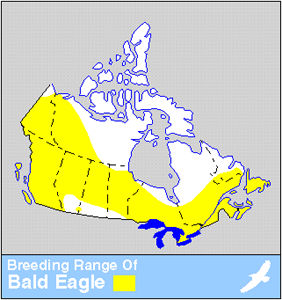Browse "Nature & Geography"
-
Article
Dragonfly
Dragonfly, common name for robust carnivorous insects of order Odonata [Gk "toothed," referring to mouth parts].
"https://d2ttikhf7xbzbs.cloudfront.net/media/media/61b31847-6ec0-4449-80f4-4d16eb081624.jpg" // resources/views/front/categories/view.blade.php
https://d2ttikhf7xbzbs.cloudfront.net/media/media/61b31847-6ec0-4449-80f4-4d16eb081624.jpg
-
Article
Drought
Drought is the condition of critically low water supply caused by persistently below-normal precipitation.
"https://d2ttikhf7xbzbs.cloudfront.net/media/media/ea2328a1-2ce9-4f2e-be69-d92cbfb2ae7a.jpg" // resources/views/front/categories/view.blade.php
https://d2ttikhf7xbzbs.cloudfront.net/media/media/ea2328a1-2ce9-4f2e-be69-d92cbfb2ae7a.jpg
-
Editorial
Drought in Palliser's Triangle
The following article is an editorial written by The Canadian Encyclopedia staff. Editorials are not usually updated.
"https://development.thecanadianencyclopedia.ca/images/tce_placeholder.jpg?v=e9dca980c9bdb3aa11e832e7ea94f5d9" // resources/views/front/categories/view.blade.php
https://development.thecanadianencyclopedia.ca/images/tce_placeholder.jpg?v=e9dca980c9bdb3aa11e832e7ea94f5d9
-
Article
Drumlin
Drumlin, smooth, half egg-shaped or ellipsoidal hill which formed beneath Quaternary GLACIERS. Drumlins [Gaelic druim, "hill"] were first described in Ireland. They lie parallel to the direction of ice movement, the blunt (stoss) end facing up-glacier, the lee sloping down-glacier.
"https://development.thecanadianencyclopedia.ca/images/tce_placeholder.jpg?v=e9dca980c9bdb3aa11e832e7ea94f5d9" // resources/views/front/categories/view.blade.php
https://development.thecanadianencyclopedia.ca/images/tce_placeholder.jpg?v=e9dca980c9bdb3aa11e832e7ea94f5d9
-
Article
Dry Bean
Common bean refers to both bean plants grown solely for immature fleshy pods (garden or green bean) and those grown for dry seeds (dry bean).
"https://d2ttikhf7xbzbs.cloudfront.net/media/media/8e804f6a-faf5-40ac-966e-493d9162961b.jpg" // resources/views/front/categories/view.blade.php
https://d2ttikhf7xbzbs.cloudfront.net/media/media/8e804f6a-faf5-40ac-966e-493d9162961b.jpg
-
Article
Dry Fishery
That portion of the Newfoundland cod fishery in which the split and cleaned product was salted and dried on shore before being transported and sold was called the dry fishery.
"https://development.thecanadianencyclopedia.ca/images/tce_placeholder.jpg?v=e9dca980c9bdb3aa11e832e7ea94f5d9" // resources/views/front/categories/view.blade.php
https://development.thecanadianencyclopedia.ca/images/tce_placeholder.jpg?v=e9dca980c9bdb3aa11e832e7ea94f5d9
-
"https://d2ttikhf7xbzbs.cloudfront.net/media/media/473c32f2-43fb-4b28-adcf-d02c1c0811c1.jpg" // resources/views/front/categories/view.blade.php
https://d2ttikhf7xbzbs.cloudfront.net/media/media/473c32f2-43fb-4b28-adcf-d02c1c0811c1.jpg
-
Article
Ducks Unlimited Canada
Concern over declining waterfowl populations in the early decades of the 20th century reached a crisis during the Prairie drought of the 1930s.
"https://d2ttikhf7xbzbs.cloudfront.net/media/media/34dceda6-da95-4a80-9845-97ae5ecc591f.jpg" // resources/views/front/categories/view.blade.php
https://d2ttikhf7xbzbs.cloudfront.net/media/media/34dceda6-da95-4a80-9845-97ae5ecc591f.jpg
-
Article
Eagle
A large bird of prey, the eagle (family Accipitridae) has exceptionally keen vision, long, powerful wings, a hooked bill and strong feet with sharp curved talons.
"https://d2ttikhf7xbzbs.cloudfront.net/media/media/27e39c49-91b9-4340-b19c-a70c005e377d.jpg" // resources/views/front/categories/view.blade.php
https://d2ttikhf7xbzbs.cloudfront.net/media/media/27e39c49-91b9-4340-b19c-a70c005e377d.jpg
-
Article
Earthquake
An earthquake is a vibratory motion generated from the movement of rock along a fault line beneath the Earth’s surface.
"https://development.thecanadianencyclopedia.ca/images/tce_placeholder.jpg?v=e9dca980c9bdb3aa11e832e7ea94f5d9" // resources/views/front/categories/view.blade.php
https://development.thecanadianencyclopedia.ca/images/tce_placeholder.jpg?v=e9dca980c9bdb3aa11e832e7ea94f5d9
-
Article
Earthworm
Earthworm, is a segmented worm of phylum Annelida, class Oligochaeta. The class comprises some 14 families, including Lumbricidae, to which the common earthworm (Lumbricus terrestris) belongs.
"https://d2ttikhf7xbzbs.cloudfront.net/media/media/20bc6dfb-ca6b-4940-a009-b7f9d763dac1.jpg" // resources/views/front/categories/view.blade.php
https://d2ttikhf7xbzbs.cloudfront.net/media/media/20bc6dfb-ca6b-4940-a009-b7f9d763dac1.jpg
-
Article
Eastern Foxsnake
The Eastern foxsnake (Pantherophis vulpinus) is a large, non-venomous snake native to the Great Lakes region of North America. Their Canadian range is limited to Southern Ontario in two distinct populations: the Georgian Bay population and the Carolinian population in extreme southwestern Ontario. Both of these populations are considered threatened by the Committee on the Status of Endangered Wildlife in Canada. Threats include habitat loss, road mortalities and persecution from humans. (See also Snake Species in Canada.)
"https://d2ttikhf7xbzbs.cloudfront.net/EasternFoxsnake/EasternFoxsnakeTree.jpeg" // resources/views/front/categories/view.blade.php
https://d2ttikhf7xbzbs.cloudfront.net/EasternFoxsnake/EasternFoxsnakeTree.jpeg
-
Article
Eastern Hog-Nosed Snake
The Eastern hog-nosed snake (Heterodon platirhinos) is a medium-sized snake with an upturned scale on the end of its snout. The scale gives the snake a pig- or hog-like appearance. In Canada, Eastern hog-nosed snakes are found in Southern Ontario south of the Canadian Shield. They are also found in the Eastern United States as far south as Florida and Texas. The Eastern hog-nosed snake is well-known for its elaborate defensive display: first, the snake flattens its neck into a cobra-like hood, and if that does not deter predators, it flips onto its back and plays dead. (See also Snake Species in Canada.)
"https://d2ttikhf7xbzbs.cloudfront.net/EasternHogNosedSnake/EasternHognoseSnakeFlatNeck.jpg" // resources/views/front/categories/view.blade.php
https://d2ttikhf7xbzbs.cloudfront.net/EasternHogNosedSnake/EasternHognoseSnakeFlatNeck.jpg
-
Article
Eastern Newt
The eastern newt (Notophthalmus viridescens) is a colourful salamander native to eastern North America. It has a large geographic range that extends from eastern Canada south throughout most of the eastern United States, making it the second-most widespread salamander species in North America. Four subspecies are recognized across its range, two of which are found in Canada: the red-spotted newt (Notophthalmus viridescens viridescens; PEI, NS, NB, QC, ON) and the central newt (Notophthalmus viridescens louisianensis; ON).
"https://d2ttikhf7xbzbs.cloudfront.net/easternnewt/CrowleyRed-spottedNewt2.jpg" // resources/views/front/categories/view.blade.php
https://d2ttikhf7xbzbs.cloudfront.net/easternnewt/CrowleyRed-spottedNewt2.jpg
-
Article
Eastman Bus Crash
Canada’s second deadliest road disaster was a single-vehicle bus crash that killed 40 people near Eastman, Quebec on 4 August 1978.
"https://development.thecanadianencyclopedia.ca/images/tce_placeholder.jpg?v=e9dca980c9bdb3aa11e832e7ea94f5d9" // resources/views/front/categories/view.blade.php
https://development.thecanadianencyclopedia.ca/images/tce_placeholder.jpg?v=e9dca980c9bdb3aa11e832e7ea94f5d9
